Bali, the “Island of the Gods,” is renowned not only for its lush landscapes and stunning beaches but also for its extraordinary temple architecture, which reflects the deep spiritual connection of its people. Temples in Bali, known as pura, are not just places of worship; they are embodiments of Balinese Hindu culture and artistic expression. Among these sacred sites, Ulun Danu Beratan stands as one of the island’s most iconic temples, offering a fascinating glimpse into the unique architectural styles and symbolism that define Balinese temples.
Ulun Danu Beratan: The Temple on the Lake
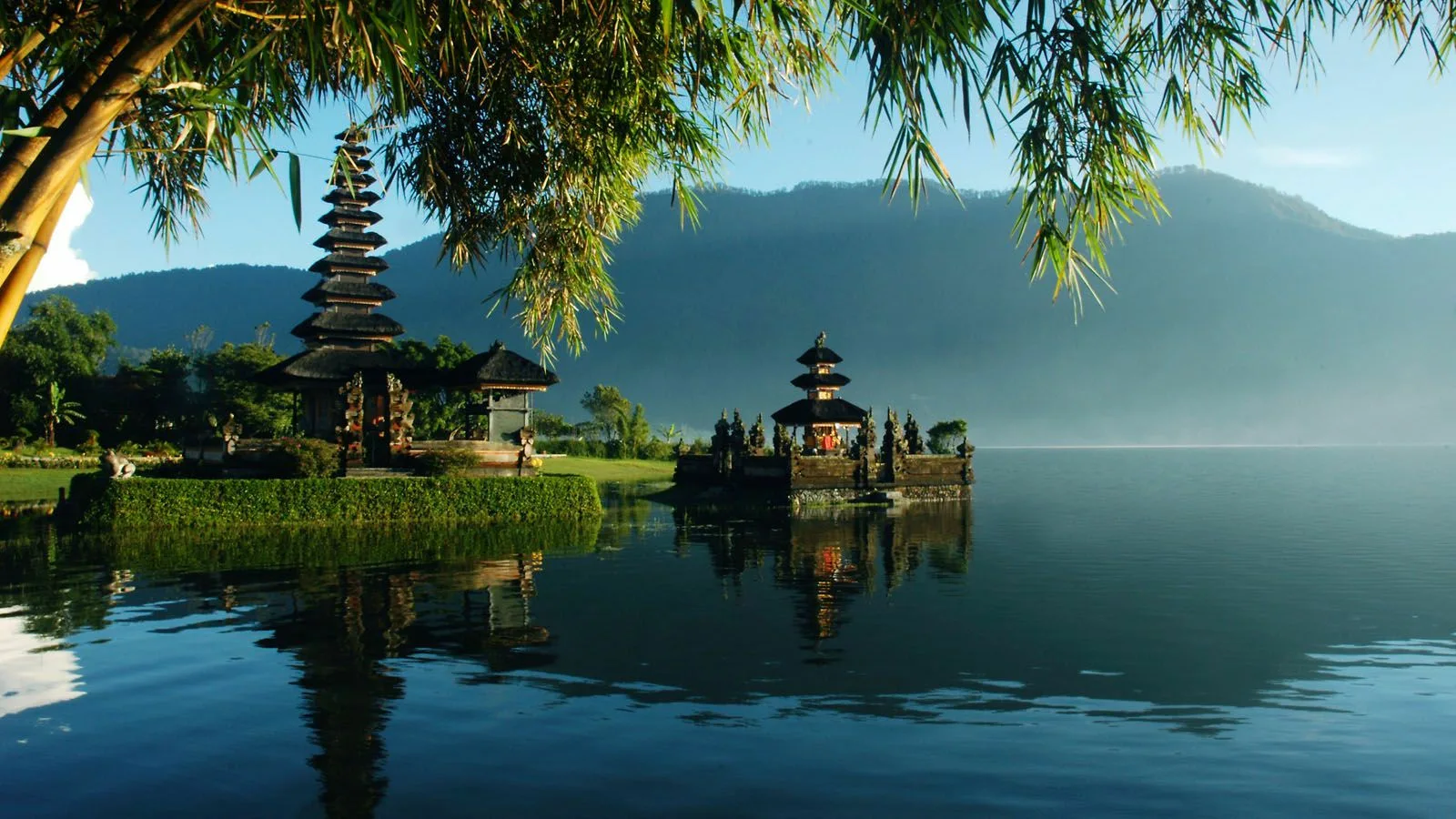
Located on the serene shores of Lake Beratan in the mountains of Bedugul, Ulun Danu Beratan is a temple dedicated to Dewi Danu, the goddess of water, lakes, and rivers. Its picturesque setting, surrounded by misty mountains and mirrored in the calm waters of the lake, makes it one of Bali’s most photographed and visited temples.
The temple complex is a beautiful example of Balinese temple architecture, which harmonizes with nature. The multi-tiered shrines, or meru, with their thatched roofs made from ijuk (black palm fiber), rise gracefully towards the sky, symbolizing the connection between the earth and the heavens. The number of tiers is significant in Balinese cosmology, representing the layers of the universe.
Ulun Danu’s design also highlights the Balinese Tri Hita Karana philosophy, which emphasizes the harmonious relationship between humans, nature, and the gods. The temple’s placement on the water represents the nurturing aspect of nature, as Lake Beratan is a crucial source of irrigation for the surrounding farmlands.
Architectural Symbolism and Sacred Geometry
Balinese temple architecture is steeped in symbolism and sacred geometry. Temples are typically divided into three main areas, reflecting the Hindu-Balinese concept of the cosmos:
- Nista Mandala: The outermost courtyard, representing the secular world.
- Madya Mandala: The middle courtyard, a space for preparation before entering the most sacred area.
- Utama Mandala: The innermost sanctuary, where the most important rituals and offerings take place.
The layout of the temple is a reflection of Mount Meru, the sacred mountain in Hindu-Buddhist cosmology, believed to be the center of the universe. This cosmic order is mirrored in the vertical structure of the shrines, with the number of tiers on a meru always being odd, typically 3, 5, 7, 9, or 11, symbolizing different deities or elements of the universe.
Beyond Ulun Danu: Other Iconic Temples
While Ulun Danu is a standout, Bali is home to thousands of temples, each with its unique architectural and spiritual significance.
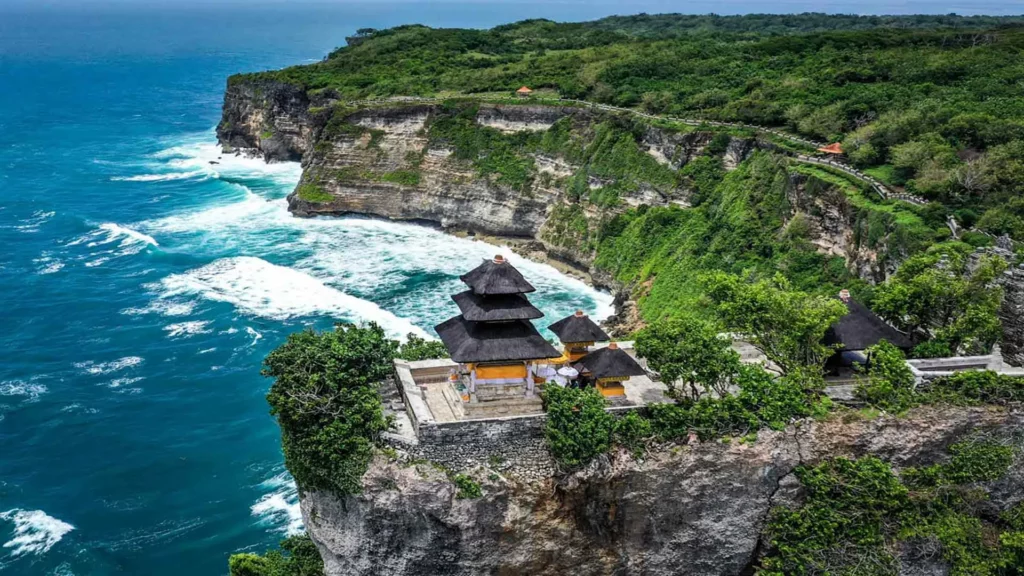
Pura Luhur Uluwatu: Perched dramatically on the edge of a 70-meter-high cliff overlooking the Indian Ocean, Uluwatu Temple is one of the island’s six key Sad Kahyangan (territorial) temples. The temple’s architecture blends seamlessly with the rugged landscape, symbolizing the balance between the spiritual and physical worlds. Visitors can also witness the famous Kecak dance performed at sunset, with the temple and ocean as a breathtaking backdrop.
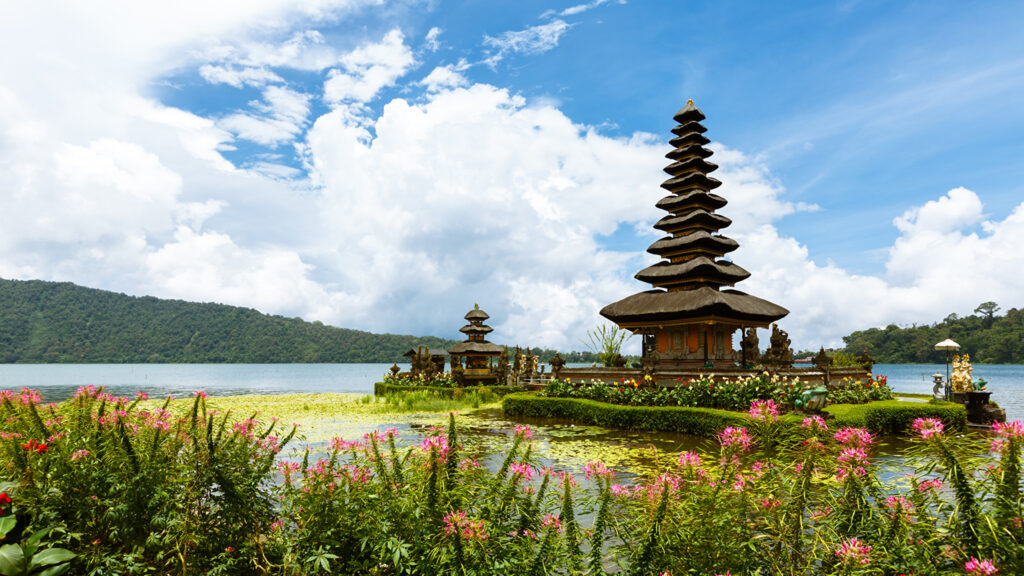
Pura Besakih: Known as the “Mother Temple” of Bali, Pura Besakih is the largest and holiest temple complex on the island, located on the slopes of Mount Agung. Its sprawling layout consists of over 80 individual temples, each dedicated to various gods and spirits. Besakih’s architecture is both majestic and ancient, featuring soaring stone gates, intricate carvings, and an awe-inspiring alignment with Mount Agung, the highest and most sacred point in Bali.
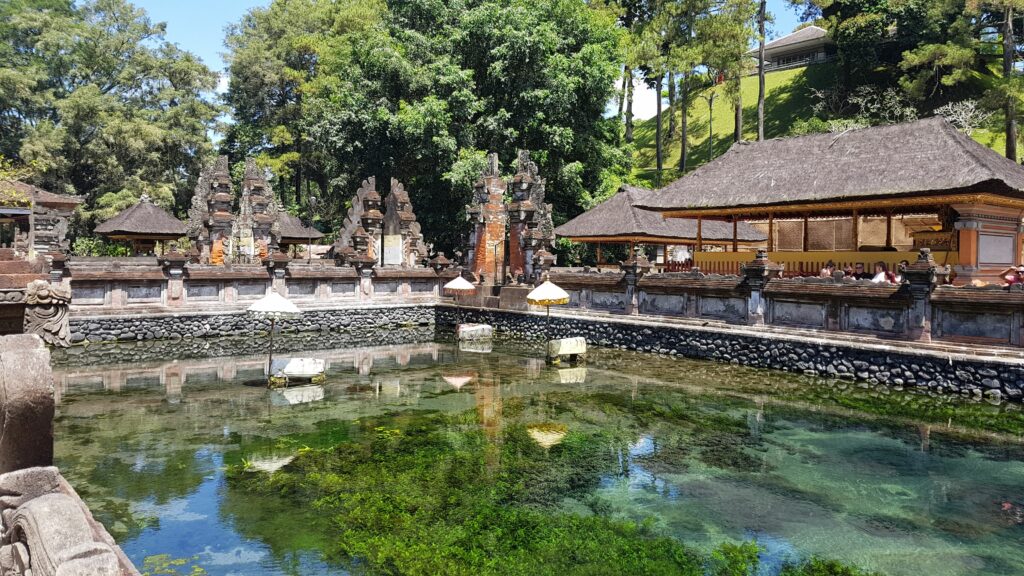
Tirta Empul: Famous for its sacred water springs, Tirta Empul is a temple complex dedicated to the Hindu god Vishnu. Visitors come to bathe in its purification pools, believed to have healing powers. The temple’s architecture is notable for its water features, with ancient stone carvings and fountains pouring into crystal-clear pools, symbolizing the cleansing of both body and spirit.
The Spiritual Experience of Visiting Balinese Temples
Exploring Bali’s temples is more than just admiring architectural beauty; it’s a deeply spiritual journey. Each temple exudes a sense of calm and reverence, inviting visitors to reflect on their own connection with nature and the divine. Traditional offerings, known as canang sari, are placed daily at the temple shrines, with intricate floral arrangements symbolizing gratitude and devotion.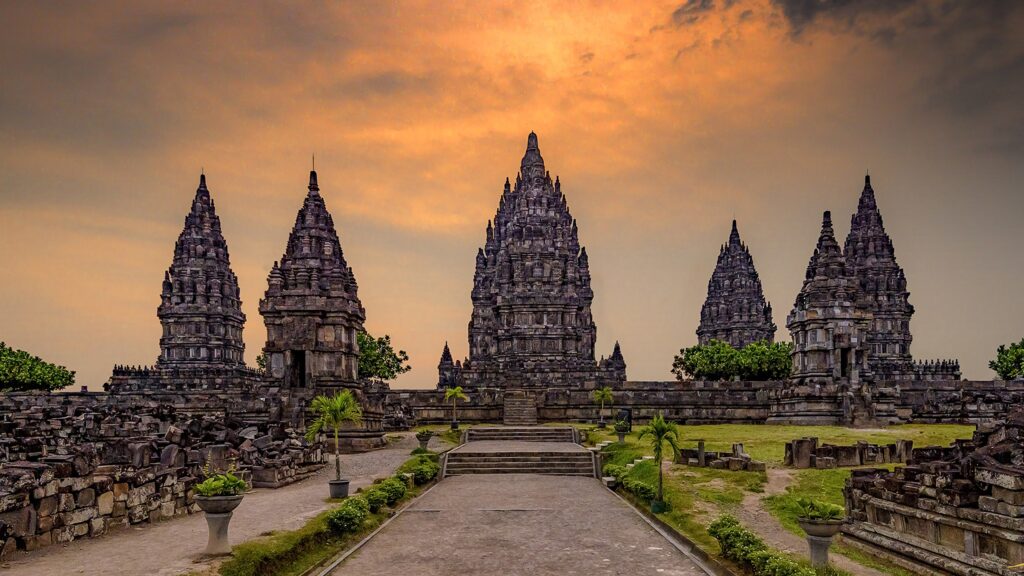
When visiting a Balinese temple, it’s essential to wear a sarong and sash as a sign of respect. These temples are not merely tourist attractions but sacred spaces where daily prayers and ceremonies are held by local communities.
Bali’s Temples – A Fusion of Art, Architecture, and Spirituality
Bali’s temple architecture is a true reflection of its culture—deeply spiritual, richly artistic, and intricately connected to the natural world. Whether standing in awe before the serene beauty of Ulun Danu Beratan, marveling at the cliff-side grandeur of Uluwatu, or participating in a cleansing ritual at Tirta Empul, visitors to Bali’s temples are not only witnessing architectural masterpieces but also immersing themselves in the island’s profound spiritual traditions.
For those seeking more than just a beach holiday, exploring the temples of Bali offers an unforgettable cultural and spiritual experience, one that reveals the island’s soul through its sacred structures.
